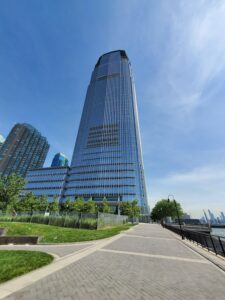Elon Musk, the visionary entrepreneur and CEO of Tesla, has consistently pushed the boundaries of innovation in the automotive industry. One of his most ambitious goals is to bring self-driving cars into the mainstream. However, this pursuit has not come without its fair share of challenges, including margin pain. In this article, we examine Musk’s perspective on margin pain and how it aligns with his vision of a self-driving future.
Understanding the Significance of Self-Driving Cars:
Self-driving cars, also known as autonomous vehicles, are poised to revolutionize the way we travel. These vehicles have the potential to enhance road safety, increase transportation efficiency, and reduce traffic congestion. With advanced sensors, artificial intelligence, and machine learning algorithms, self-driving cars can navigate roads, interpret traffic signs, and react to potential hazards, all without human intervention.
Elon Musk’s Vision and Tesla’s Role:
Elon Musk has been a vocal advocate for the widespread adoption of self-driving cars. He believes that autonomous vehicles are the future of transportation and envisions a world where self-driving technology is the norm. Tesla, as a leading electric vehicle manufacturer, has been at the forefront of this revolution. The company’s vehicles are equipped with advanced driver-assistance features, paving the way for fully autonomous driving.
The Margin Pain Challenge:
Despite the tremendous potential of self-driving cars, developing the technology and bringing it to market comes with significant challenges. One of the most pressing issues faced by Tesla is margin pain, which refers to the impact on profit margins during the transition to autonomous driving. Musk has acknowledged that the cost of developing and refining the necessary technology is substantial, leading to increased expenses and potential margin squeeze.
Musk’s Strategy to Overcome Margin Pain:
While margin pain is a concern, Musk remains optimistic and has outlined several strategies to mitigate its impact. First and foremost, he emphasizes the importance of scaling up production to reduce costs. Tesla aims to increase the volume of self-driving hardware and software, leveraging economies of scale to drive down expenses. Additionally, Musk is focused on refining Tesla’s Full Self-Driving (FSD) software through continuous updates and improvements, which he believes will justify the investment over time.
Long-Term Benefits of Self-Driving Cars:
Despite the short-term challenges, Musk firmly believes that the long-term benefits of self-driving cars will far outweigh the margin pain. Once autonomous vehicles become widespread, they are expected to significantly reduce the number of accidents caused by human error, leading to safer roads. Moreover, self-driving cars have the potential to revolutionize transportation systems, improve traffic flow, and reduce the environmental impact of commuting.
Conclusion:
Elon Musk’s pursuit of a self-driving future is both ambitious and challenging. While margin pain remains a concern for Tesla, Musk’s strategies to overcome it demonstrate his determination and long-term vision. The advent of self-driving cars has the potential to reshape our transportation systems and revolutionize the way we travel. As we embark on this exciting journey towards a self-driving future, we can anticipate a world where autonomous vehicles become the norm, and the margin pain faced today will be a small price to pay for the benefits of tomorrow.












